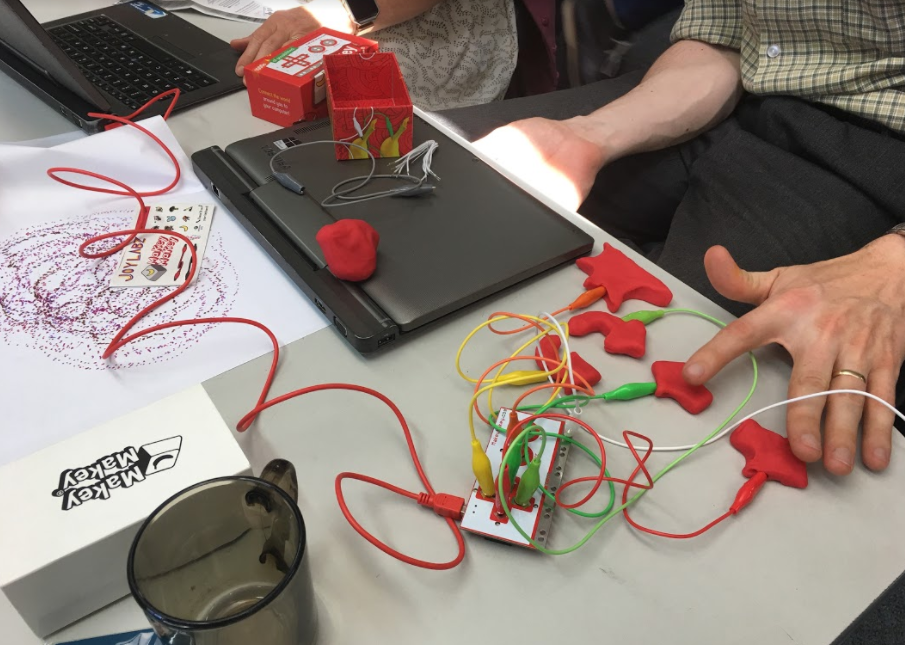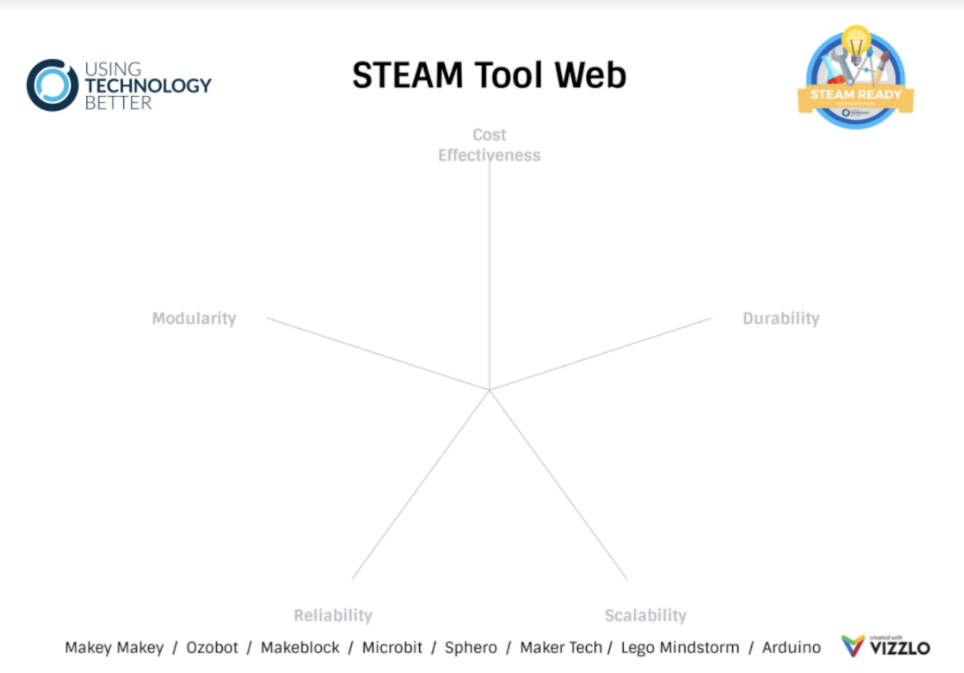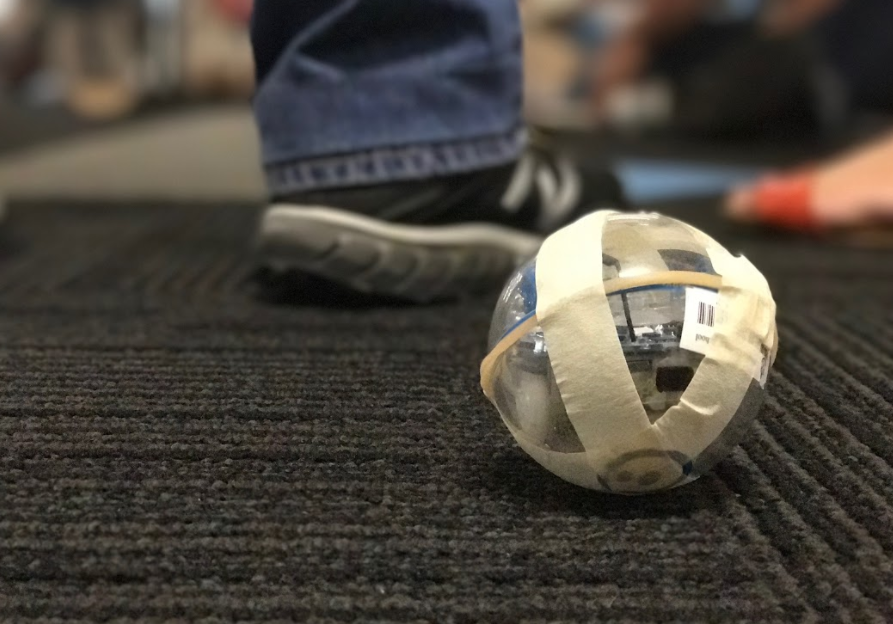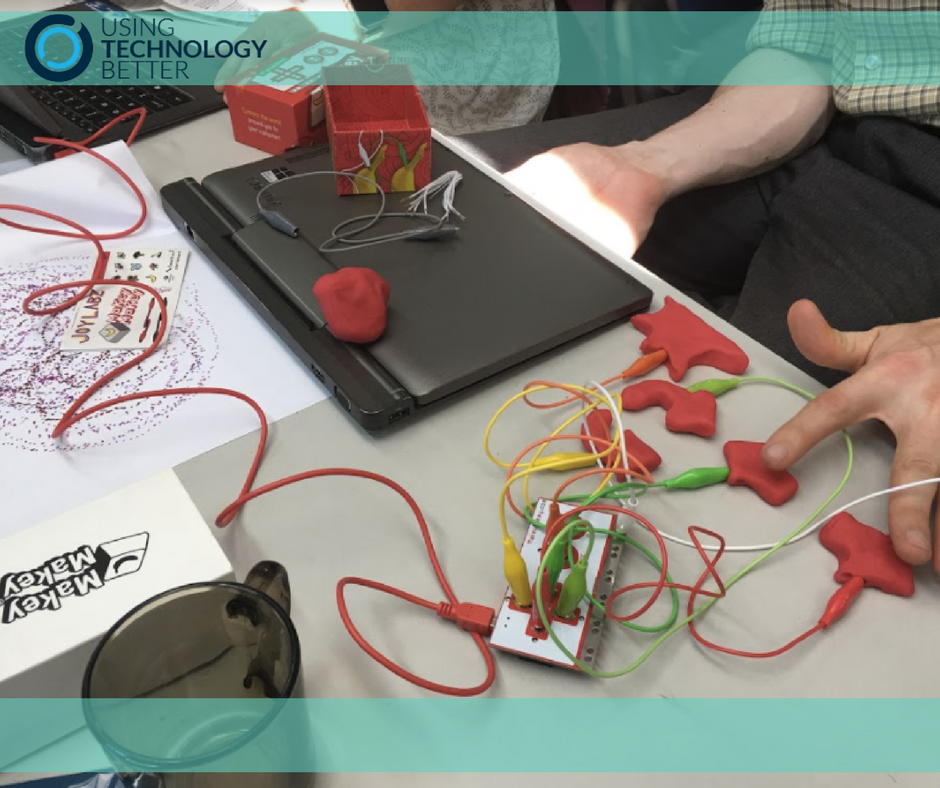Is your school looking at developing a STEAM Learning program? This could be either a stand alone course or class, or perhaps an integrated program that aims to help you meet the requirements for all your curriculum goals in a hands-on, inspiring way.

No matter what type of program you choose, it’s critical to make wise decisions about the tools you buy for your learners to choose. We support schools to develop their strategic goals using our ‘9 Building Blocks of a STEAM Ready School.’ One of those blocks involves your equipment. (If you’d like to find out more about our STEAM Ready Program, see our online flyer here for more information.) It’s crucial that schools are very intentional about which tools they invest in and choose those which are right for their students. Here are 4 things we suggest you do to help make those important decisions.
1.Start with your vision in mind.
2.Always trial the product where possible – with your students!
3.Use our STEAM Web tool to help you make the decision.
4.Don’t be afraid to make some mistakes and refine your purchases over time.
[bctt tweet=”Here are 4 things you should do before you spend any money on STEAM tools for your school. ” username=”markherringnz”]
1. Start with your vision in mind.
We always encourage school leadership teams to develop a strong understanding of what their vision is: What are they trying to achieve? Where do they want to end up/ What would it look like when they get there? This is a key driver of your decision making processes, both at the start and as your vision develops over time – as it always does.
If we had a dollar for every time we heard a school say that they bought this device or piece of equipment because the salesman sounded convincing, or ‘…the school down the road has some.’ It’s critical for you to know what your STEAM tools need to do for you and your students before you spend a cent. Every school is different and what will help one school achieve their vision is different from another.
2. Always trial the product and, where possible, with your students!
This sounds like an obvious step, but one which few schools take. Most re-sellers are open to you having a few demo models to trial for a few weeks. I’d recommend that you give these to both a competent ‘tech’ teacher, and also ones who are less confident, to trial with a group of students.
Having the STEM / STEAM equipment trialled with a range of ages and abilities is also a great idea. You’ll have a good idea at the end of the trial period about all the factors that need to be considered to make a solid decision. This canpotentially helpi you save making an expensive mistake.
3. Use our STEAM Web tool to help you make the decision.

At a STEAM workshop a while ago I spent some time with some teachers taking a closer look at the pros and cons of some of the equipment we were using. We decided to use a ‘web’ or comparison chart to plot our thinking. We compared the robotics against five criteria and graphed the results visually. This proved to be a great way to see which tools were going to suit their specific needs.
The criteria we chose were;
- Cost (were we going to get our money’s worth?)
- Durability (how sturdy and robust were the parts, in children’s hands?)
- Scalability (what range of student abilities could this tool facilitate?)
- Modularity (how well did it allow the user to be creative and adapt, add to, change, invent with?)
- Reliability (did it work most times without too many ‘gliches’)
This process can be an effective way to make a decision and feel comfortable with your future investment. We know that every school will have a range of different needs and requirements so we think it’s best for schools to complete this web tool for themselves. Click this link to download a free PDF version for you to use with your school.
[bctt tweet=”This ‘STEAM Web Tool’ will make sure that your decision about which equipment to buy for your school is the right one!” username=”markherringnz”]
4. Don’t be afraid to make some mistakes and refine your purchases over time.
Once you’ve gone through some of these steps and made a choice that you think is right for your school, it’s very common for technology to progress, your vision to develop further and your awareness of what tools are available to grow.
We’d suggest that this is just a normal part of the innovation process and that schools shouldn’t be too concerned about changing track and going in a different direction. Our first steps in developing new things are usually not the greatest in hindsight. We encourage schools to appreciate that looking back and regretting a purchase is actually a positive sign of growth and development. It’s also a chance to learn what to do next and continue on your journey towards developing engaging, inspiring learning opportunities for your students.

I hope this gives you a few tips that could help you make some great decisions about your growing STEAM programs.
If you’d like to talk with us about how we could further support your school with your STEAM learning program, get in touch by emailing us at this link. We’d love to partner with you and be a part of your STEAM journey.











